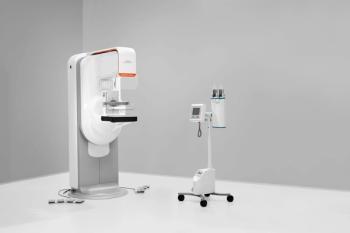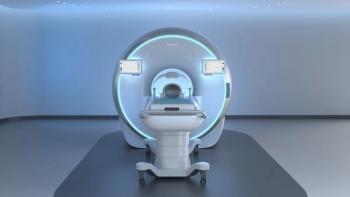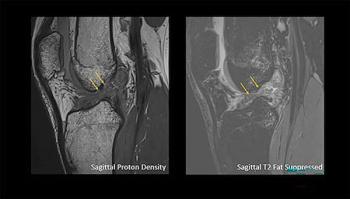
Analogic expands OEM focus to tap into integrated systems market
Analogic expands OEM focus to tap into integrated systems marketFirm sees new revenue opportunities in PACS and DRAs more medical device vendors opt to outsource as a way to expand their product lines into image and information
Analogic expands OEM focus to tap into integrated systems market
Firm sees new revenue opportunities in PACS and DR
As more medical device vendors opt to outsource as a way to expand their product lines into image and information management, some OEM suppliers are seizing the opportunity to provide more turnkey products to their customers. One such company is Analogic, a long-time components supplier to the medical imaging industry.
The Peabody, MA-based firm recently announced a new strategic plan that focuses its resources into more integrated business units and lays the groundwork for several new market-oriented divisions, including digital radiography and ultrasound. This is a major shift from the companys traditional approach, in which several technology-oriented divisions operated independently and served multiple markets, including medical, industrial, and telecommunications.
As many companies start to look at themselves as solutions providers, it offers us the opportunity to offer imaging systems rather than imaging components, said Thomas Miller, who has been president and COO of Analogic since last fall (PNN 9/99). We would like to ultimately become a full-service, full-product-line medical imaging developer and manufacturer for OEMs.
Analogic also plans to break out its Computer Telephony product group for an IPO, possibly sell off some noncore assets, and create a New Technology Development Group that will be headed up by Bernard Gordon, founder and CEO of Analogic.
We are not intending to depart from our OEM structure, Miller said. (But) There is an unfulfilled demand for systems versus components, and once you get into the systems business, there is a need to better orient yourself so you have a depth of understanding of market needs.
Less-than-robust financials over the past year also played a part in Analogics decision to embark on this new strategy, however. The company reported sales of $280 million for 1999 (end-July), down from 1998s $294 million; net income for the same period was $19.5 million, compared with $24 million for 1998. Medical components, subsystems, and systemsincluding imagingcurrently account for 78% of Analogics annual revenues.
The company has been experiencing fairly solid growth, but we had stalled a bit and had gotten to a point where we needed to sit back and reassess where we were going to be able to accelerate our growth again, Miller said.
As part of this new approach, Analogics PACS business, which has operated as part of its Computer Design and Application group, will likely become part of a larger medical group that will align the most relevant technological capabilities under a single umbrella. Analogic has been in the PACS OEM business for about seven years, selling a variety of components and software tools to enhance DICOM data acquisition, data management, image distribution, and systems integration. But the company is interested in offering turnkey systems as well as standalone components to its dozen or so PACS customers and modality vendors interested in adding image and information management products and services to their offerings.
Our strategy now is to move into more of a systems place in the market, as opposed to selling subsystems, and to be more of a PACS components supplier than a subsystems supplier, said Rich Borelli, director of sales, marketing, and customer support for the CDA division. We are trying to bring the divisions closer together so the solutions can be more integrated, complete, and cost-effective.
Outside of PACS, several OEM customers are already outsourcing some noncore businesses to Analogic. The company has a long-standing relationship with Fuji for its computed radiography products and engineered the computed tomography system displayed by Philips Medical Systems in its booth at the RSNA meeting last November (PNN 1/99). Analogic also engineered Kodaks digital x-ray systems, including the family of DR systems introduced by Kodak at the RSNA meeting (PNN 1/00).
In fact, Analogic is anticipating strong growth for its DR products this year. The company first delved into the DR market last year with the acquisition of medical-detector assets from Noranda Advanced Materials, a Canadian firm that had been developing an amorphous selenium-based digital detector product for three years (PNN 9/99). Through its Anrad subsidiary, which will now become a subset of the new DR division, Analogic continues to work with some OEM partners to develop and refine an amorphous selenium-based DR system but has no definite timeline for commercial introduction of its first DR products.
We have reason to believe that we can hit a cost point and an image-quality point that are better than any of the other approaches being considered, Miller said. And we have solid contracts that make us very confident this will be a profitable business for us.
The company also sees significant growth opportunities in medical imaging with its new technology platform product, iWorks, which was introduced at the 1999 RSNA meeting (PNN 2/00). iWorks is designed to serve as a universal workstation and DICOM image-management and workflow tool for PACS, CR, and DR. It features a Web-enabled client/server architecture that permits customers to configure multiple inputs for PACS, CR, DICOM, and DR applications.
iWorks comprises three core application modules. The data acquisition module allows the iWorks platform to receive data from multiple sources, including DICOM, film digitizers, CR plate readers, and other acquisition modalities. The data management module provides a configurable menu of tools and capabilities that enable manual or automatic operation of specific tasks and functions. The image distribution module is an output engine that integrates with a hospitals DICOM network.
A series of new products will be based on iWorks, according to Borelli; the first of these will be PACS workstations with workflow tools and image processing and reviewing capabilities for CR and DR systems. Another near-term release will enable film digitization, DICOM conversion, and the ability to automatically route images into the appropriate electronic patient folders.
© 2000
Search again Homepage
Newsletter
Stay at the forefront of radiology with the Diagnostic Imaging newsletter, delivering the latest news, clinical insights, and imaging advancements for today’s radiologists.




























